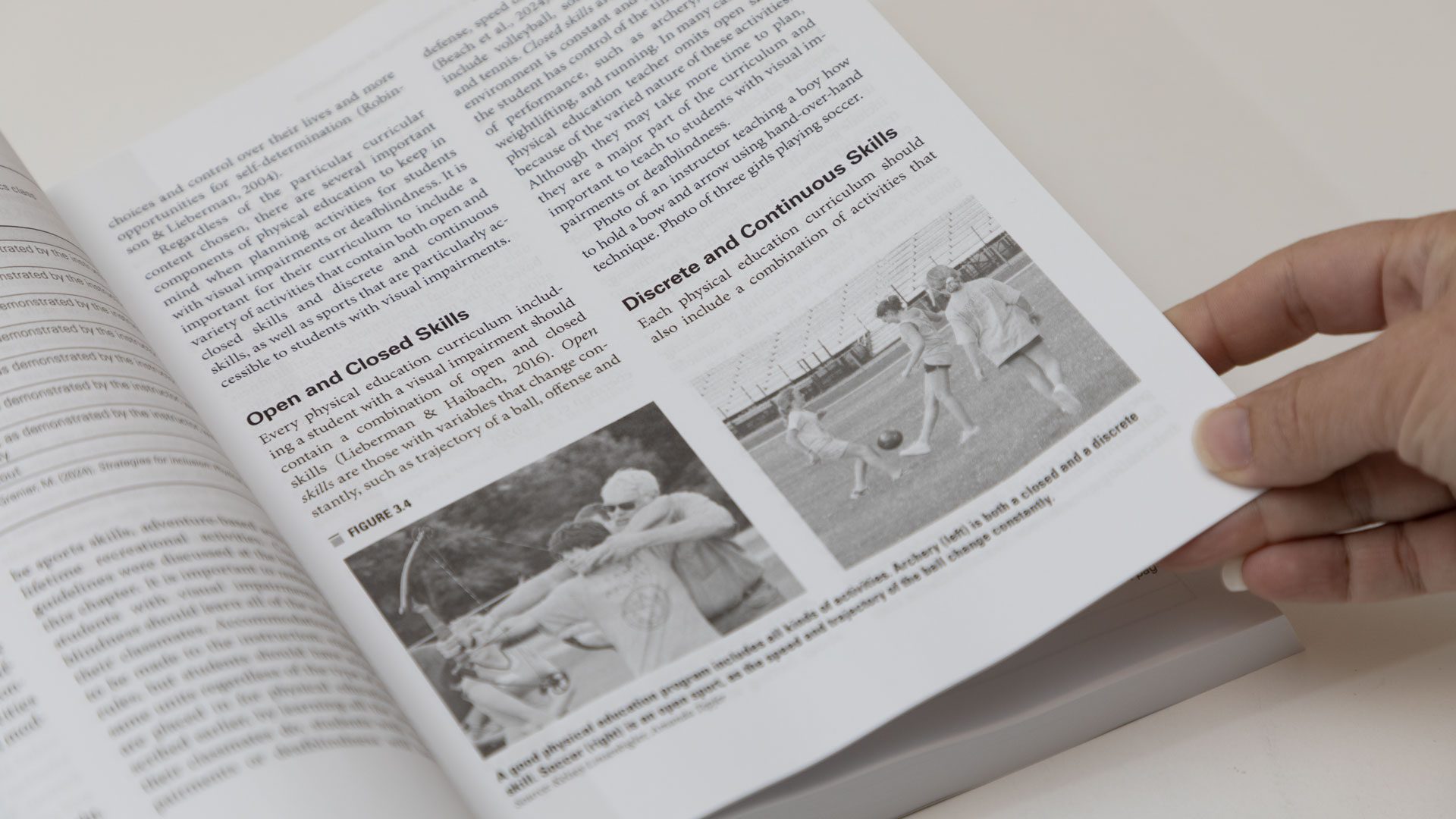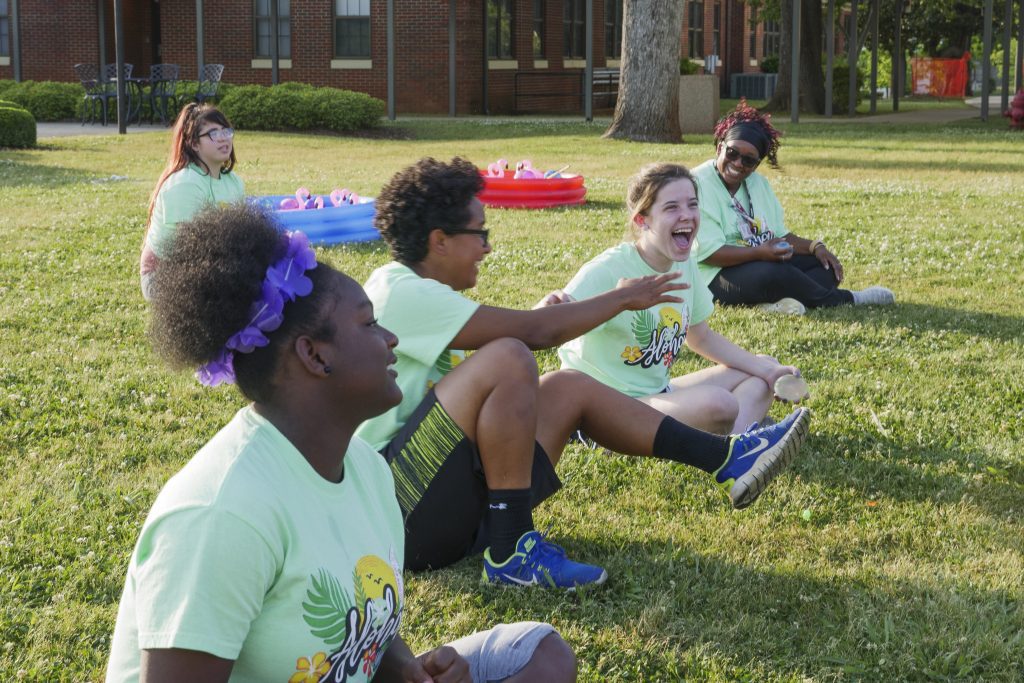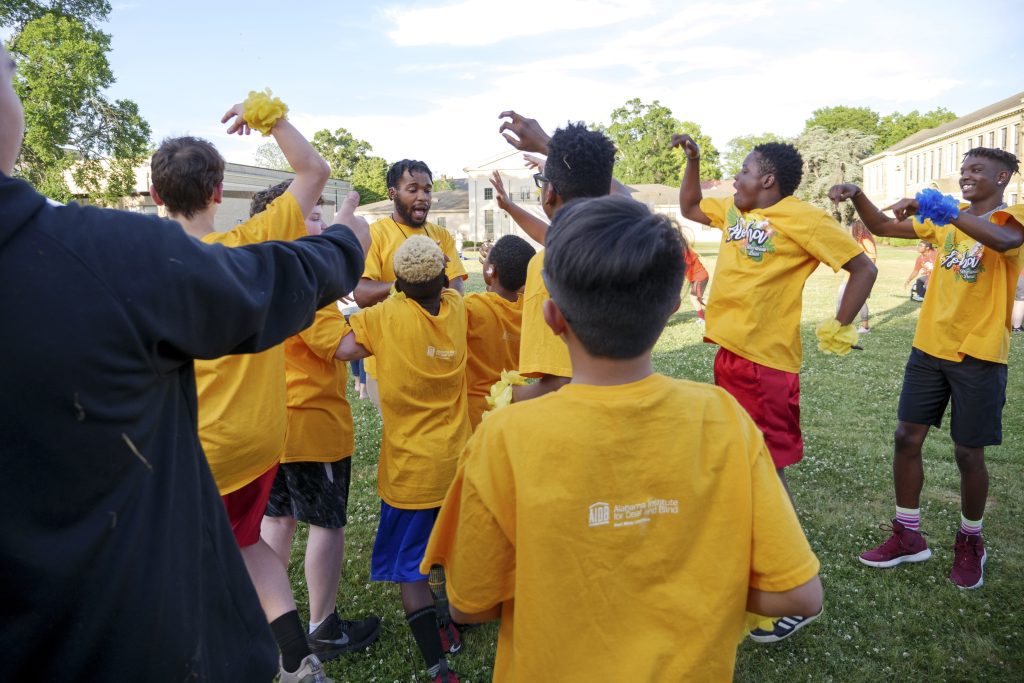To ensure your items arrive in time for the holidays, please place all orders using Free Matter shipping by Saturday, November 29 or by 12pm on Thursday, December 18 for UPS or USPS Priority shipping. School orders will be held after Monday, December 15 through the end of the year.
CloseP.E. and Sports for People with Visual Impairments and DeafBlindness: Foundations of Instruction (2nd ed.)

When preparing their child for a successful future, some people consider physical education a secondary concern. There’s often a misperception that a strong background in physical activity is not entirely necessary. For people who are blind or low vision, however, that perception couldn’t be further from the truth. Ensuring that their child can develop a lifelong love of their body, and its capabilities is a cornerstone of helping them achieve a fulfilling, meaningful life.
Physical Education and Sports for People with Visual Impairments and DeafBlindness: Foundations of Instruction (2nd ed.), a new release from APH Press, is written with that goal in mind. Authors Lauren Lieberman, Pamela Beach, and Paul Ponchillia bring a wealth of experience and passion to the book as they are each accomplished educators with a history of creating rewarding, accessible experiences. They know that it’s not as simple as inviting students who are blind or low vision to play with their peers. A combination of factors can limit access, whether it’s parental shielding, a lack of educator training, or lack of access to equipment. “Addressing these challenges requires collaboration among educators, parents, and specialists to create inclusive environments that encourage active participation and skill development,” Beach says.
Physical Education and Sports takes a holistic approach through proven pedagogical methods and step-by-step instruction which, Lieberman says, “Will help teachers, parents, and specialists take the time to ensure they have high expectations of all of their students.” Beach agrees, emphasizing that the book isn’t just for school-age learners. “[We cover] a wide range of ages, [providing] insights and strategies that are relevant for early childhood, adolescence, adulthood, and even into older age, promoting a comprehensive understanding and support system for individuals with visual impairments throughout their lives.”
An important piece of the puzzle is embracing what the authors call dignity of risk. “If you talk to any student who is blind or low vision, they will tell you times when the teachers say the game is too fast for them, or too dangerous,” Leiberman says. “The dignity of risk gives the decision on risk taking back to the student. With a universally designed curriculum, the dignity of risk allows the student who is blind or low vision to determine their preferred accommodations and their level of risk in sports, games, and recreation. [Our book] explains how to set students up to make these informed decisions and to self-advocate.” Teaching self-advocacy is emphasized in a new chapter that aims to give students tools to speak for themselves and foster family support. It’s often an unspoken mental and emotional component of physical education. Teaching students what they are capable of goes hand in hand with teaching them how to recognize their worth.
It was important for the authors to include role models who are blind or low vision throughout the book, from medal-winning Paralympians to passionate innovators like Miyoshi Takei, whose invention of blind tennis has opened a whole new field for athletes. These role models demonstrate the power of a lifelong pursuit of physical activity—and they include Ponchillia, who, after a career teaching others how to embrace their capabilities, is living the example through hiking, snowshoeing, kayaking, and fly fishing. He embodies one of the book’s core principles— physical activity is for everyone at every age.
“Our hope is that this book will help this next generation of children [with low vision and DeafBlindness] reach their full potential and change the perception of what people with blindness or low vision can do in sports and in life,” Lieberman says. She points to her former student Lindsay Ball, who wrote the book’s foreword. Ball is a Paralympic skier, marathon runner, professor, and researcher. “She is certainly inspirational!” says Lieberman.
Stories like Ball’s are told through a series of her successes and failures, ever encouraged by a supportive network. “It’s crucial to educate and raise awareness among educators and peers alike about the potential of youth with low vision and blindness, focusing on abilities rather than disabilities,” Beach says. “Providing youth with visual impairments with lots of opportunities to learn motor skills, sports, and recreation activities helps them to have more opportunities to play with their peers and socialize. […] Encouraging a positive mindset, setting achievable goals, and celebrating successes help build self-confidence, empowering them to reach their full potential.” Physical Education and Sports for People with Visual Impairments and DeafBlindness paves the way for the next generation of athletes who are blind, deafblind, or low vision at every skill level.
Share this article.
Related articles

Adapted Physical Education for Blind and Visually Impaired Students: The Future of Inclusive P.E.
No child should be left out of an activity due to being blind or having low vision. Unfortunately, this happens...

Adapted Physical Education: Partnering with the Blind and Visually Impaired Community
Finding a way to adapt to a sport and building a community with other athletes can be a challenge. Many...

Exploring the World of Adapted Physical Education: Enhancing Inclusivity for Blind and Visually Impaired Students: Overcoming Challenges and Addressing Concerns
Parents and physical education teachers may hesitate when it comes to allowing their child or student who is blind or...
